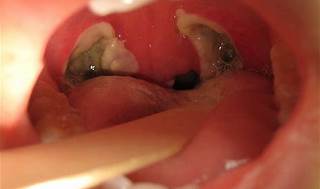A nurse in the emergency department is caring for a school-age child who has developed respiratory stridor, wheezing and urticaria after receiving an IV medication.
Which of the following actions should the nurse take first?
swer and explanation
Administer oxygen
Administer a nebulized bronchodilator
Administer epinephrine
The Correct Answer is D
Choice A rationale
Administering methylprednisolone, a corticosteroid, can help reduce inflammation. However, it is not the first-line treatment for severe anaphylaxis.
Choice B rationale
Administering oxygen can help improve the child’s oxygenation, but it is not the first action the nurse should take in this situation.
Choice C rationale
Administering a nebulized bronchodilator can help relieve wheezing, but it is not the first action the nurse should take in this situation.
Choice D rationale
Administering epinephrine is the first-line treatment for anaphylaxis. It works quickly to improve breathing, stimulate the heart, raise a dropping blood pressure, and reduce swelling of the face, lips, and throat.
Nursing Test Bank
Naxlex Comprehensive Predictor Exams
Related Questions
Correct Answer is B
Explanation
When prioritizing care for multiple clients, the nurse should first assess the client who is most unstable and has the most urgent needs. In this case, the adolescent with sickle cell anemia and slurred speech should be assessed first. Slurred speech could indicate a stroke, which is a life-threatening condition that requires immediate medical attention. The other clients, while they also require care, are not in immediate danger and can be assessed after the adolescent with sickle cell anemia.
Correct Answer is ["A"]
Explanation

The correct answer is choice a. Discourage the child from coughing.
Choice A rationale:
Discouraging the child from coughing is important because coughing can dislodge clots and cause bleeding at the surgical site, which is a common complication after a tonsillectomy.
Choice B rationale:
Providing cranberry juice to the child is not recommended because acidic juices can irritate the throat and cause discomfort or pain.
Choice C rationale:
Maintaining the child in a supine position is not ideal as it can increase the risk of aspiration. Instead, the child should be positioned on their side or with the head elevated to facilitate drainage and reduce the risk of aspiration.
Choice D rationale:
Administering an analgesic to the child on a scheduled basis is important for pain management, but it is not the most immediate action to take one hour postoperatively. Pain management should be part of the overall care plan.
Whether you are a student looking to ace your exams or a practicing nurse seeking to enhance your expertise , our nursing education contents will empower you with the confidence and competence to make a difference in the lives of patients and become a respected leader in the healthcare field.
Visit Naxlex, invest in your future and unlock endless possibilities with our unparalleled nursing education contents today
Report Wrong Answer on the Current Question
Do you disagree with the answer? If yes, what is your expected answer? Explain.
Kindly be descriptive with the issue you are facing.
